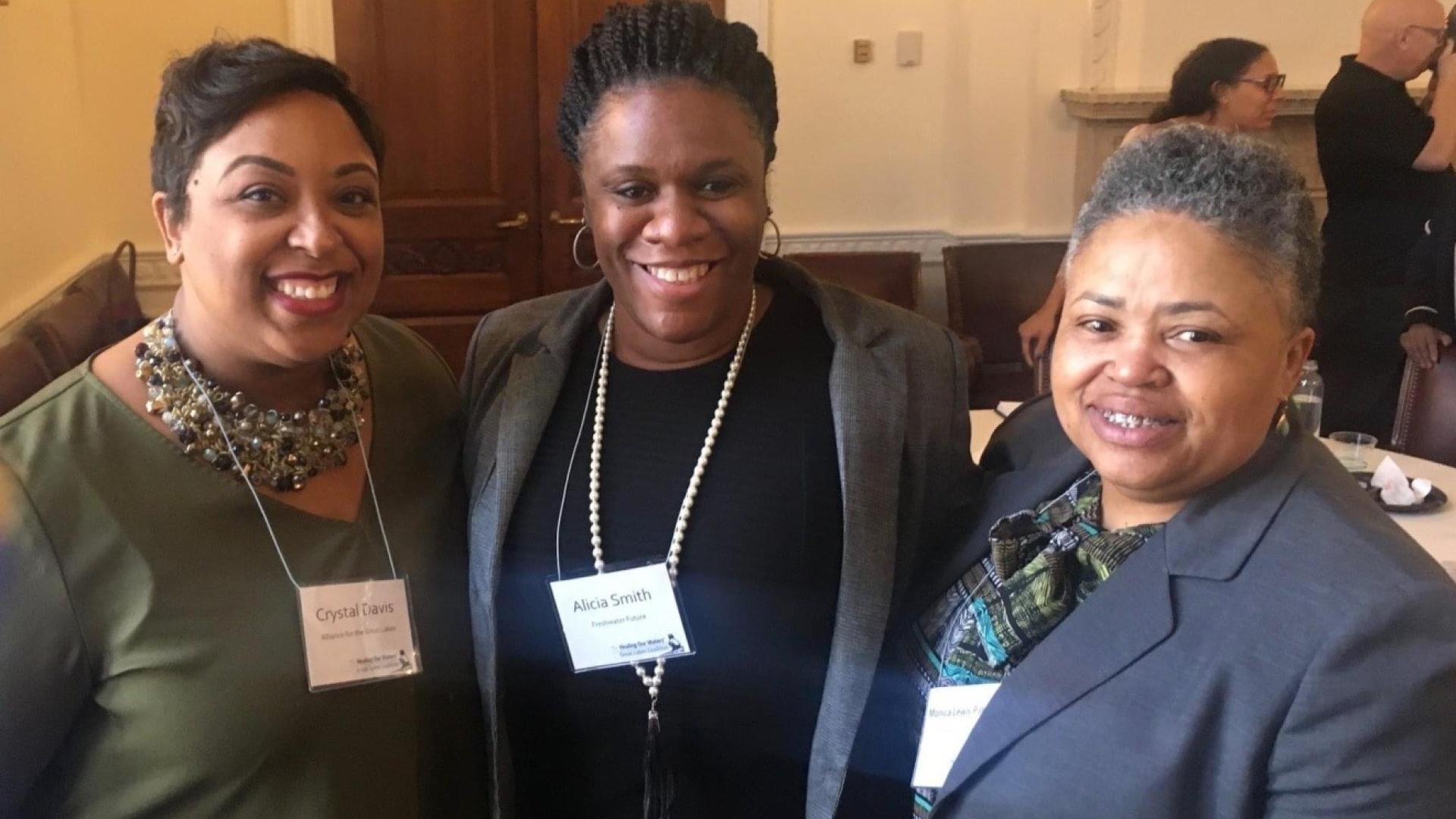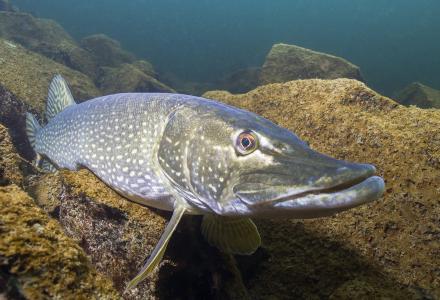
While Western science plays a big role in decision-making, it matters who is conducting the research and in what communities. Statistics from organizations such as the National Academies of Science, Engineering and Medicine show that for much of the past few centuries, able-bodied adult white men have dominated science spaces, with women, young people, people with disabilities and people of color broadly underrepresented. A recent push in science and decision-making processes known as Justice, Equity, Diversity and Inclusion (JEDI) is working to normalize bringing these historically marginalized groups into leadership roles where their insights and experiences can help shape work to be more beneficial and informative for all.
In Science Organizations, a Goal of Diversity
Among members of the International Association for Great Lakes Research (IAGLR), JEDI has been brewing in the background for a few years, said Donna Kashian, IAGLR board member and scientist at Wayne State University.
After the killing of George Floyd in Minnesota in May and subsequent protests, Kashian said IAGLR leaders realized they needed to centralize the JEDI movement to IAGLR’s focus. A June discussion at IAGLR’s annual conference, held virtually, was moderated by fellow IAGLR board member Jennifer Boehme, an environmental scientist with the IJC’s Great Lakes Regional Office.
What started off as an overview of the panelists and what brought them to JEDI quickly expanded into stories, personal histories and thoughts from attendees across issues of gender identity and sexual orientation, race and accessibility.
“Right off the bat, one of the first comments was that all these virtual conferences didn’t have closed captioning,” Kashian said. “We got a lot of suggestions … like to reconstruct IAGLR’s bylaws and charter to make sure every aspect of IAGLR has diversity components to it.”
Catherine Febria, researcher at University of Windsor and another JEDI panelist at the IAGLR conference, said this isn’t just a topic for North America and the Laurentian Great Lakes. The discussion included scientists in Africa, and Febria spent five years working in Aotearoa, New Zealand, alongside farming and Māori communities before taking her current position in Canada.
Febria added that her identity not just as a scientist but as a woman of color has allowed her to recognize that the status quo of scientists not playing a role in discussions and action around inclusive policies and research designs is simply untenable in the modern world.
“It feels like we can’t really go back to being ignorant or separate from issues in our communities as scientists,” Febria said. “I want to see these discussions and actions to become more normalized.”
Kashian noted that efforts to change IAGLR – and research in the Great Lakes and across the globe – can’t just be the purview of historically marginalized folks. Part of the effort, she said, must involve making sure researchers and leaders within the dominant demographic understand their privilege and actively advocate for change, which may involve stepping aside on projects and in organizations to make space at the table for others.
“More diversity in science brings new perspectives and voices and helps make applicable changes at the political level,” Kashian said. “How you approach problems scientifically and come up with solutions does vary as people have different perspectives based on how they came up.”
Febria said that given a rocky history between scientists and marginalized communities, trust has to be built, and sessions – and work – like that IAGLR’s conference this year are a first step.
But IAGLR is not an end-goal so much as one segment of a larger tapestry; research labs and community organizations have already been doing work on the ground to realize the goals of JEDI in the Great Lakes space.

JEDI’s Community Support Brings Local Empowerment
Speaking from her perspective as a freshwater scientist, Febria said the issues of water quality that can be seen along the Canada-United States transboundary and the globe can only realistically be dealt with in a way that can produce positive outcomes for everybody by starting with broader, JEDI-based involvement and commitment to co-producing knowledge and solutions.
“It’s taken generations for ecosystems to get to this level of degradation, and it’ll take generations to bring us back to some level of healthy resilience, especially in the face of climate change,” Febria said. “Partnering with the stewards of the land is the only way to do this work in the timescales needed.”
Febria said that thanks to a five-year federal grant, she has been able to hire seven Indigenous researchers for her Healthy Headwaters Lab. With this support, the lab has partnered with local farmers and the Walpole Island First Nation (Bkejwanong Territory) on projects related to ecosystem monitoring and land use – echoing her experience working with settler farming families and Māori community members in Aotearoa, New Zealand.
“It’s important to center voices in the land in the work we do,” Febria said. “It’s important that we understood the social landscape before getting into the science itself.”
But this isn’t to say that communities are relying on scientists to come to them. Monica Lewis-Patrick, a member of the Healing Our Waters (HOW) Coalition’s Equity Advisory and Action Committee, said that organization has been able to make fellow coalition members mindful of how race, equity and justice factor into its political efforts to restore the Great Lakes.
“It’s usually the people of color of talking about not having water or having toxic water, and then on the other side it’s usually white people talking about fishing, boating and recreational interactions,” Lewis-Patrick said. “When we started going to these meetings, and seeing people who have traumatizing experiences with (drinking) water, it really shifted our mindset at We the People that we needed to go back to the drawing board and dig deeper.”
Lewis-Patrick, also a member of the IJC’s Great Lakes Water Quality Board and president of We the People of Detroit, said the key has been bringing the community into advocacy and decision-making spaces. While science organizations – including the IJC – are frequently focused on specific issues like mining impacts, agricultural runoff, manure and chemicals, too often the conversation overlooks the impacts on drinking water. With millions of people unable to access safe, clean and reliable drinking water in the United States (according to the US Water Alliance) even before the economic squeeze brought on by COVID-19, Lewis-Patrick said these cumulative human impacts need to be part of scientific and policy discussions. Indigenous peoples in Canada also face significant challenges accessing potable water.

Indigenous voices are being better recognized in Great Lakes-based organizations, Lewis-Patrick said, and racial and gender diversity are improving more broadly. Still, one group that remains underrepresented is younger people, defined by the United Nations as between the ages of 15-24.
“I would like to see a dedicated role for youth at the table on both sides of the water, in both countries,” Lewis-Patrick said. “We definitely make space for elders and Indigenous voices, but not for the youth who are also contending with environmental harms.”
We the People of Detroit has been one of several community organizations trying to make that space. Lewis-Patrick said they have helped organize an offshoot, We the Youth of Detroit, to discuss water disparity and how to empower themselves and their community. Those involved have reached out to fellow youth in Flint, Michigan, where drinking water was poisoned with lead after a disastrous attempt to change water sources by the state government, and have been learning together about the science of water testing, water quality and water availability.
Along with sister organizations in Benton Harbor, Michigan; Milwaukee, Wisconsin; Chicago, Illinois and other areas around the Great Lakes, Lewis-Patrick said youth are learning how to test their own drinking water, install water filters and ensure that their own supplies are safe for drinking, cooking and washing. They’re also learning how to advocate for better water availability. This push by young people and other historically marginalized groups is beginning to drive conversations in western states like Washington and Oregon, Lewis-Patrick said.
“These (young people) have become the experts. Those are moments where we have turned trauma into transformation.”

Kevin Bunch is a writer-communications specialist at the IJC’s US Section office in Washington, D.C.



